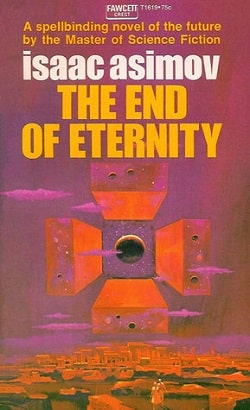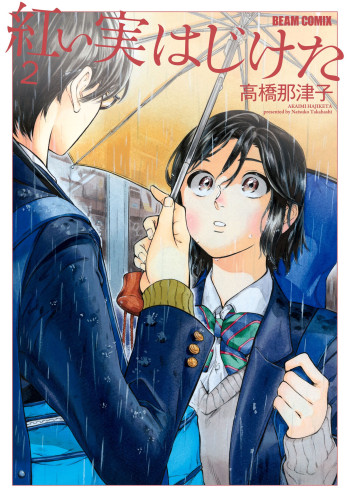Summary

The End of Eternity
by Isaac Asimov
Andrew Harlan is an Eternal, a man whose job it is to range through past and present Centuries, monitoring and, where necessary, altering Time's myriad cause-and-effect relationships. But when Harlan meets and falls for a non-Eternal woman, he seeks to use the awesome powers and techniques of the Eternals to twist time for his own purposes, so that he and his love can survive together.
.
Read
The End of Eternity on http://kissnovel.net
Martial Peak Reviews
Isaac Asimov's The End of Eternity is a masterful exploration of time, love, and the ethical dilemmas that arise when one attempts to manipulate the very fabric of reality. Set against the backdrop of a future where time travel is not only possible but regulated by a group known as the Eternals, the novel delves into the complexities of human emotion and the consequences of altering time for personal gain.
The protagonist, Andrew Harlan, is an Eternal tasked with monitoring and adjusting events across various centuries to ensure the stability of the timeline. This role places him in a unique position, allowing him to witness the unfolding of history while simultaneously possessing the power to change it. Asimov's portrayal of Harlan is both compelling and relatable; he is a man caught between duty and desire. His internal conflict becomes the driving force of the narrative, particularly when he falls in love with a woman from outside the Eternals, a non-Eternal named Noÿs. This relationship serves as the catalyst for Harlan's rebellion against the rigid constraints of his role, leading him to question the very principles that govern the Eternals' existence.
One of the most striking themes in The End of Eternity is the concept of free will versus determinism. As Harlan navigates the intricacies of time manipulation, he grapples with the implications of his actions. The Eternals operate under the belief that their interventions are for the greater good, yet Harlan's personal motivations challenge this notion. Asimov skillfully illustrates the tension between individual desires and the collective needs of humanity, prompting readers to ponder the moral ramifications of altering fate. This theme resonates with contemporary discussions surrounding technology and ethics, making the novel remarkably relevant even decades after its publication.
Character development is another area where Asimov excels. Harlan's transformation from a dutiful Eternal to a man willing to defy the very system he serves is both believable and poignant. His love for Noÿs humanizes him, allowing readers to empathize with his plight. Noÿs herself is a well-crafted character, embodying the qualities of curiosity and resilience. Her interactions with Harlan reveal the depth of their connection and the sacrifices they are both willing to make for love. Asimov's ability to create multidimensional characters enhances the emotional weight of the story, making their struggles and triumphs feel authentic.
The narrative structure of The End of Eternity is also noteworthy. Asimov employs a linear progression that is interspersed with flashbacks and time jumps, effectively immersing readers in the complexities of time travel. This technique not only serves to build suspense but also reinforces the theme of interconnectedness across time. Each alteration Harlan makes has far-reaching consequences, illustrating the butterfly effect in a manner that is both engaging and thought-provoking.
Asimov's prose is clear and accessible, yet it carries a depth that invites contemplation. His ability to weave intricate scientific concepts into the fabric of the narrative without overwhelming the reader is commendable. The dialogue is sharp and often laced with philosophical undertones, prompting characters to engage in discussions that challenge their beliefs and motivations. This intellectual engagement elevates the novel beyond mere science fiction, positioning it as a work that encourages readers to reflect on their own values and choices.
In comparison to other works in the science fiction genre, The End of Eternity stands out for its unique approach to time travel. While many authors, such as H.G. Wells in The Time Machine or Philip K. Dick in The Man in the High Castle, explore the implications of time travel through different lenses, Asimov's focus on the ethical dilemmas faced by those who wield such power sets his work apart. The Eternals' bureaucratic approach to time manipulation contrasts sharply with the more chaotic interpretations found in other narratives, providing a fresh perspective on the age-old question of whether humanity should tamper with time.
The impact of The End of Eternity extends beyond its narrative. It invites readers to consider the nature of love, sacrifice, and the consequences of our choices. As Harlan's journey unfolds, it becomes clear that the pursuit of personal happiness can lead to unforeseen repercussions, not just for oneself but for the entirety of humanity. This poignant message resonates deeply, reminding us that our actions, no matter how small, can ripple through time in ways we may never fully understand.
In conclusion, Isaac Asimov's The End of Eternity is a thought-provoking exploration of time, love, and morality that remains relevant in today's world. Through the lens of Andrew Harlan's journey, Asimov challenges readers to reflect on the complexities of human emotion and the ethical implications of our choices. With its rich character development, intricate narrative structure, and profound themes, this novel is a must-read for anyone interested in the intersection of science fiction and philosophy. It stands as a testament to Asimov's genius and his ability to craft stories that resonate across generations.
























Reviews 0
Post a Reviews: